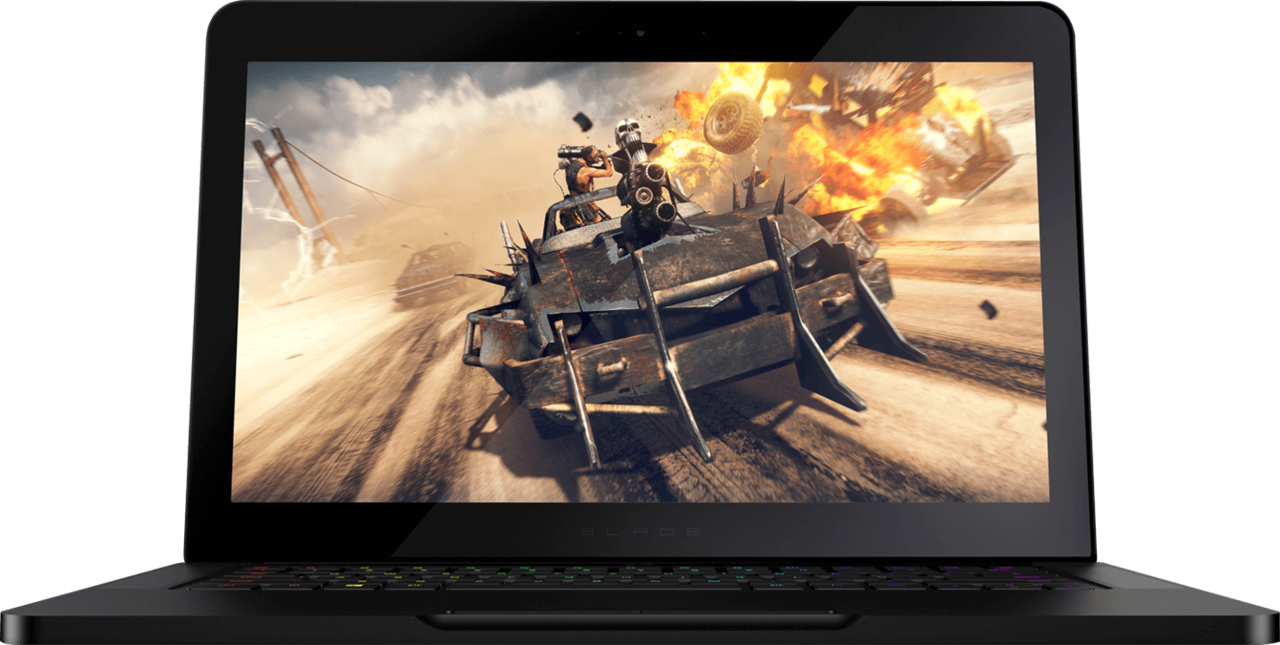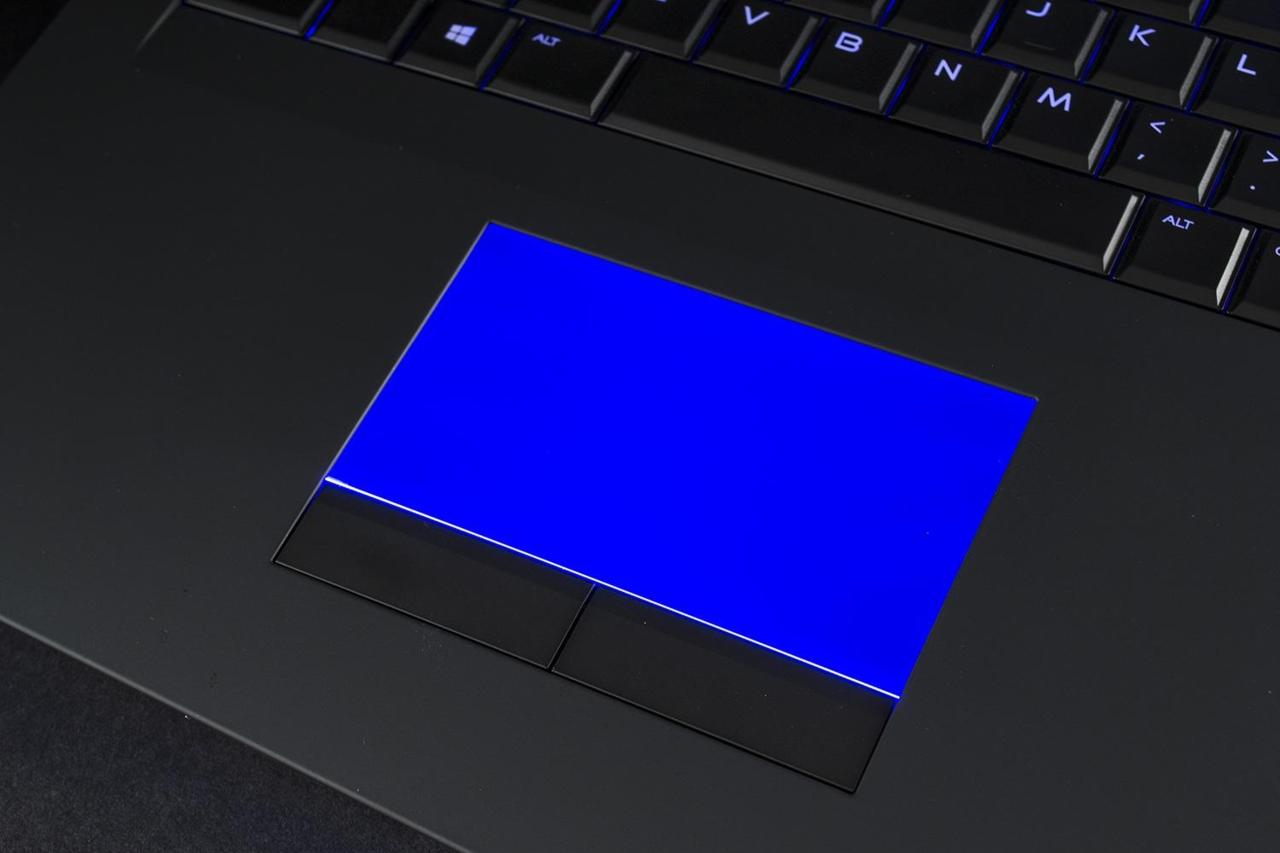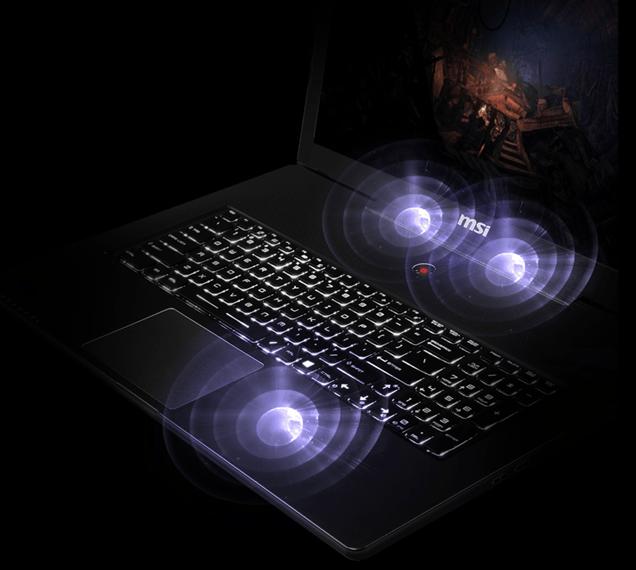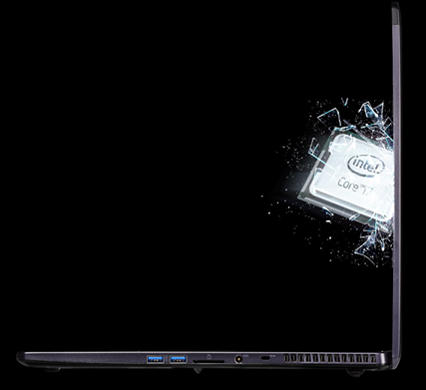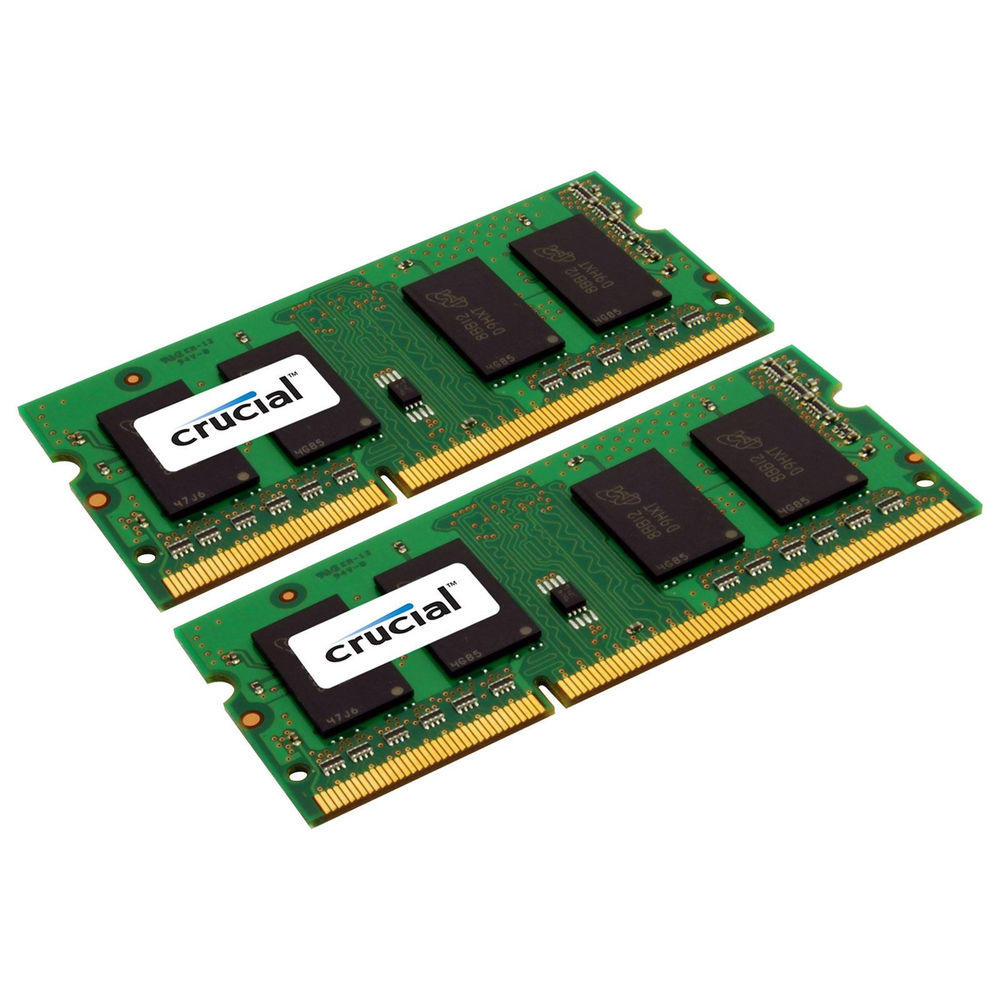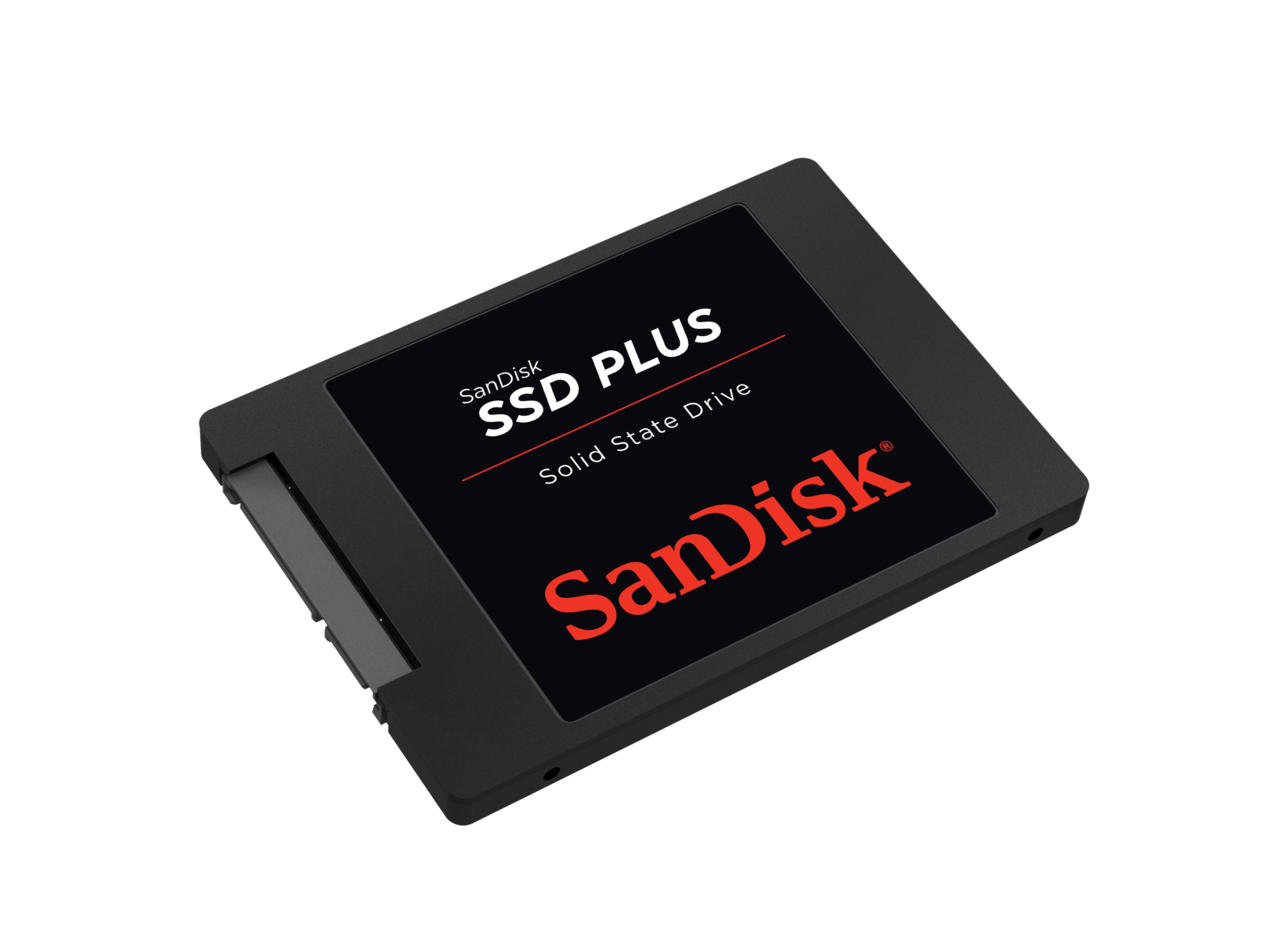10 Things To Look For In A Gaming Laptop
GameSpot may receive revenue from affiliate and advertising partnerships for sharing this content and from purchases through links.
PC gaming desktops are awesome. Unfortunately they aren’t very portable and are a pain to lug around. They’re also pretty much impossible to play on planes and trains. Luckily, gaming laptops have come a long way. They come in all different shapes, prices, and configurations. The downside here is that it can be a bit overwhelming shopping for a gaming laptop if you haven't done your research. That’s why we’re here to help. In the next few slides, you’ll find our 10 essential tips for buying a gaming notebook.
Monitor
There’s a lot to consider when looking at a laptop’s monitor. The most obvious aspect is the monitor’s size. A smaller 14-inch gaming laptop monitor will generally come in a more ultraportable form factor nowadays, whereas a 17- or even 18-inch notebook will most likely be not only heavier, but thicker as well. It will also come with more powerful components. This isn’t always the case, however, as vendors like MSI and Razer do make thin 17-inch gaming laptops.
Perhaps more important than the pure physical size of the monitor is the panel’s resolution. 1080p is largely the standard here, and that’s actually the resolution we’d recommend for your laptop, if gaming is what you mostly aim to do with it. While gaming laptops now come equipped with desktop-equivalent graphics cards and some with 4K displays, the resolution is still really taxing on modern hardware. Don’t get us wrong, 4K looks great for video viewing (for the limited 4K video content that’s out there), but it’s simply too taxing on hardware today to confidently recommend. For the time being, you’re better off saving the extra cashola. But what of 2560x1440 resolution, you ask? While 1440p panels may sound great, the majority of laptop vendors seem to have skipped that resolution, as it’s not very common outside of phones, tablets, and desktop monitors.
The next thing to consider about the monitor is whether or not it uses an IPS (in-plane switching) or TN (twisted nematic) panel. IPS panels usually come at a small premium, but it’s worth it as the added cost offers a much wider range of viewing angles and greater color accuracy. Not only do the colors “pop” more, but it makes them very useful in the professional photo/video editing scene. For reference, smartphones predominately use IPS displays.
The next thing to consider about panels is their refresh rate. If you have a 60Hz monitor (by far the most common refresh rate), it doesn’t matter if your GPU is able to render games at 100 frames per second, as your monitor will lock the FPS down to the refresh rate of your display. While it’s more common in the discrete monitor scene, some gaming laptops do offer higher than 60Hz refresh rates. The sexily named Sager NP9870-S offers a 75Hz display, which allows you to see up to 75fps. Beyond the static refresh rate, however, there is an emerging tech called variable refresh rate. This gives your monitor’s refresh control to your graphics card. What this means for you is smoother visible performance without any screen tearing, even at lower framerates. It can make 30fps look much smoother than it might otherwise. If you’ve never seen it before, this might sound like black magic, but it actually works! On the Nvidia side, there’s G-Sync, and on AMD’s side, there’s FreeSync.
Trackpad
While you’ll most likely use a mouse when gaming, this doesn’t mean you should settle for a mediocre trackpad. Unfortunately, it’s really hard to gauge how well a trackpad feels unless you try it yourself. If you can’t try it out at a store or at a friend’s place, then look at some online reviews. You should also do research to see if it has all the bells and whistles that you’re looking for. Does it allow two-finger scrolling? Does it feature pinch-to-zoom? Does it have integrated buttons underneath the trackpad or are they separate, physical, discrete buttons? Some gaming laptops, like Alienware’s 14 series, even feature glowing trackpads. It’s definitely not super important, but it may satiate your Tron fixation.
Keyboard
A good keyboard will offer a decent sense of actuation force and, like a desktop’s mechanical keyboard, should feel more tactile as a result. A bad laptop keyboard will feel mushy and squishy. These will occasionally make you second guess whether or not you actuated a certain key. While MSI makes a crazy behemoth of a gaming laptop with a mechanical keyboard, this is definitely not necessary and is certainly overkill.
Though not super important, many gaming keyboards also offer built-in lighting these days. This can help you type in the dark during those late-night gaming sessions. The fancier laptop keyboards will offer customizable RGB lighting. It’s a nice thing to have, but you shouldn’t feel the need to spend extra money for it.
Speakers
Nowadays it’s really hard to find horrendous speakers in gaming laptops. We are not suggesting they’ll all blow you away, but most of them do offer a decent amount of sonic punch. If you’re gaming, chances are you’ll use your own headset anyway, but it is worth noting that some gaming laptops come with subwoofers on the bottom, which give you some extra oomph.
Size and weight
Contrary to popular belief, thinner is not always better. While a four-pound, .8-inch thick laptop is great for portability, thin gaming laptops are more prone to overheating and performance throttling. Plus, they’re generally less powerful than their behemoth brothers to begin with. Your laptop’s size can also impact the amount of noise it makes. The hotter a laptop gets, the louder the fans have to rev up to keep things cool. So it really comes down to what you’re looking for: If you’re looking to play relatively non-taxing games like League of Legends, Counter-Strike, and Dota 2 and want something portable, then by all means, go for the thin unit. If you want something that will play some of the more intensive games like Battlefield 4 and Metro Last Light and want more longevity out of your notebook (laptops that run hot all the time tend to die out quicker), going for the bulkier unit might be the better investment.
Ports
When buying a laptop, be sure to ask yourself if it has all the ports you need. Can it accommodate all the USB devices you intend to use? How many USB 3.0 ports vs. USB 2.0 ports does it have? Does it offer a USB type C connection? Does it have an SD card slot? What about HDMI/DisplayPort connectivity for your monitor? Ethernet port? Make sure not to overlook this factor when you’re shopping around.
CPU
For gaming, we recommend a quad-core laptop from Intel. Anything above four cores generally goes to waste when it comes to gaming today because games aren’t optimized for them. Besides the actual number of cores, another thing to look out for is processor frequency. This is how fast a CPU runs. For instance, the i7-6700HQ carries a base processor frequency of 2.6GHz, but will turbo up to its max frequency of 3.5GHz if need be. Beyond that, some Intel chips do feature hyperthreading, which is great for productivity, but has little-to-no impact on most games.
It is worth mentioning that some gaming laptop vendors are able to squeeze desktop CPUs into large laptop chassis (like the aforementioned Sager NP9870-S), but unless you’re looking for a desktop replacement, you’ll be paying a premium for overkill.
RAM
For gaming, make sure you’ve got 8GB of RAM or more. If you use Google Chrome a lot, that browser will eat as much RAM as you can chuck at it, so it wouldn’t be a bad idea to opt for 16GB. Anything above that is largely unnecessary for gaming. We also recommend setting up RAM to run in dual-channel mode. This means you have two sticks of RAM as opposed to one. While this might make it costlier to upgrade in the future, running in dual-channel offers greater RAM bandwidth. As for the speed of the RAM, as long as you’re running 1600MHz and above (which most gaming laptops will offer), you’ll be fine. While faster RAM speed can be more impactful for gaming on laptops that are simply running off of integrated graphics, this won’t really affect a gaming laptop with a discrete GPU.
Graphics Cards
Speaking of discrete graphics, Nvidia seems to rule the roost when it comes to mobile GPUs. If you want to play at high settings for most games at 1080p, we recommend going with a GeForce GTX 1050 Ti. If you intend to try and max out games at that resolution, we recommend going with the GTX 1060. If you don’t need top-of-the-line performance, an entry-level GPU like the GTX 1050 will do the job, especially if you mainly play non-taxing games like Counter-Strike: Global Offensive and League of Legends. Even Intel’s Iris Pro integrated graphics will get you up and running just fine.
If you want something more powerful to allow you to take advantage of a laptop’s high refresh rate monitor, we’d recommend a GTX 1070. If you intend to game at 4K, we’d recommend a laptop with a GTX 1080.
Another feature worth paying attention to is how much VRAM (video RAM) a mobile GPU has. Currently, 2GB of GDDR5 VRAM is decent for 1080p, and 4GB and above is great for laptops with higher resolution panels. Having more VRAM comes in handy with handling game textures or when you’re gaming at really high resolutions.
Storage
Solid-state drives are a must. There’s a saying that I use: “Friends don’t let friends buy computers without SSDs,” and that applies to both desktops and laptops. Ideally, you’d have a 240GB-sized SSD or greater and then a supplemental hard drive for mass storage of your games.
If you can’t get a 240GB SSD or greater, you should get at least a 120GB for the operating system. This will allow your laptop to boot up much faster (think 14 seconds and under) and should feel much more responsive overall. Don’t fall for solid-state hybrid drives, though. These are essentially just hard drives with a small caching SSD on them. While they are marginally faster than strict HDDs, they are a far cry slower than pure solid-state drives.
If you want something even faster, you could get a laptop with two SSDs and have them configured in RAID 0. In RAID 0, you'd be prone to lose data on both drives if even one of them fails, but you'd have up to double the speed.
SSDs come in a variety of form factors, which include traditional 2.5-inch SSDs (like the ones you’d install in a desktop) or smaller mSata and M.2 form factors. M.2 SSDs are now largely using the faster NVMe protocol, which can be even faster than two traditional SATA-based SSDs in RAID 0. Samsung’s 960 Evo is a good example, for instance. NVMe SSDs do cost a bit more than traditional SSDs, however, so consider them more in the nice-to-have category for the time being.

